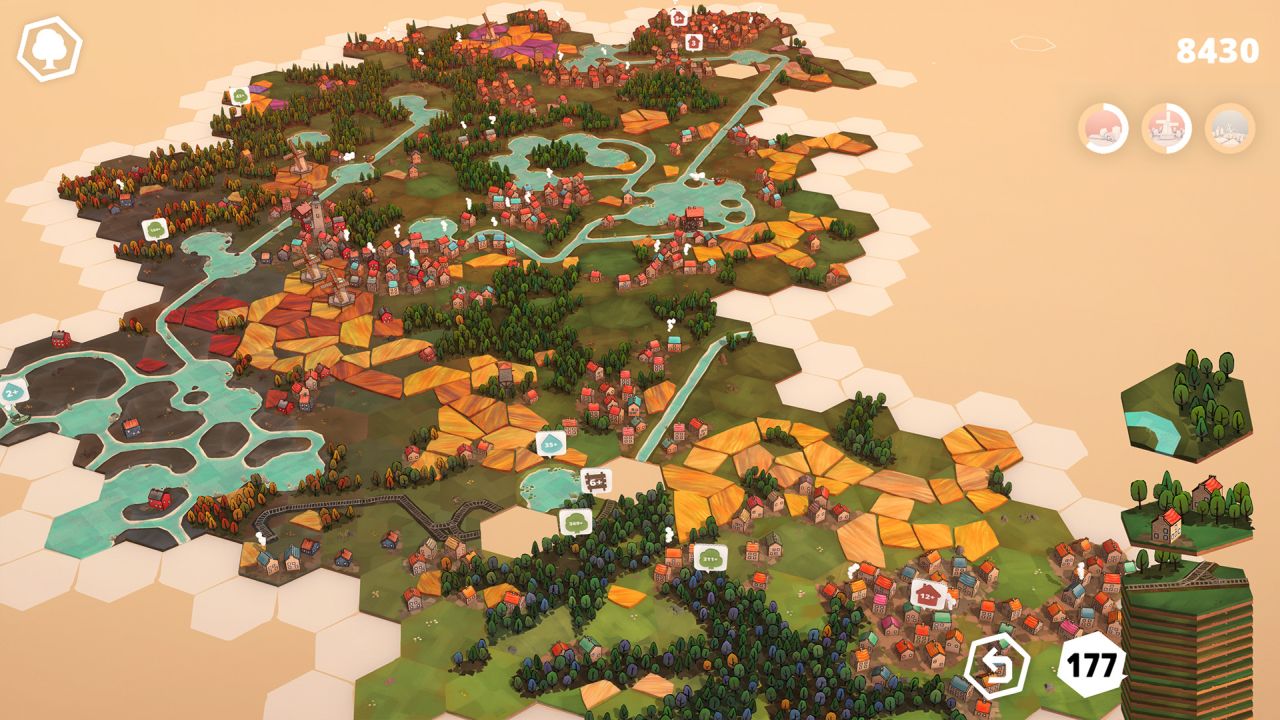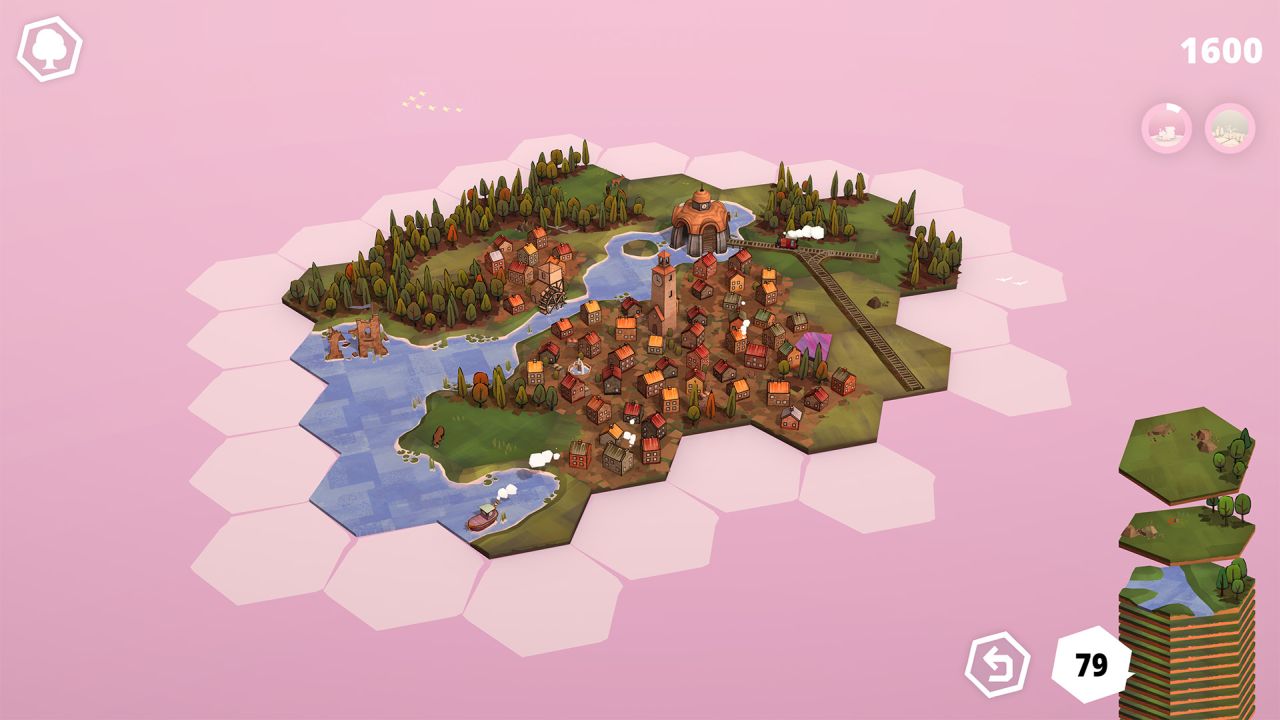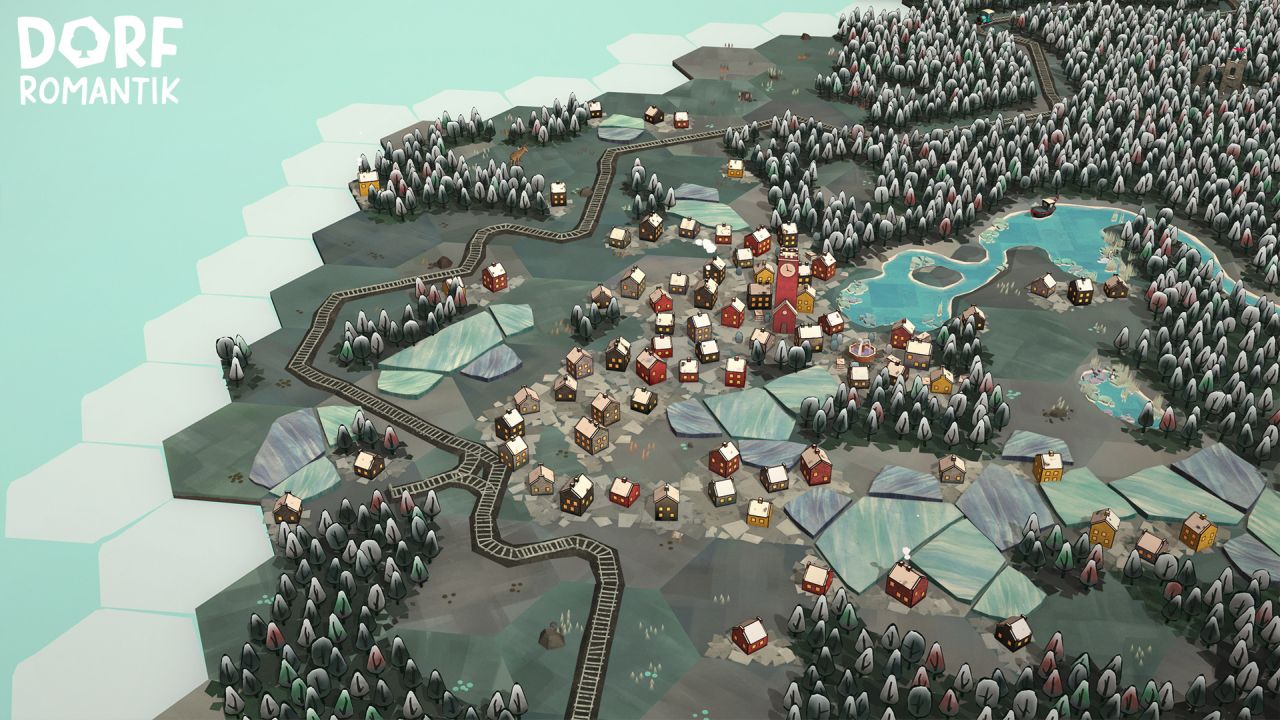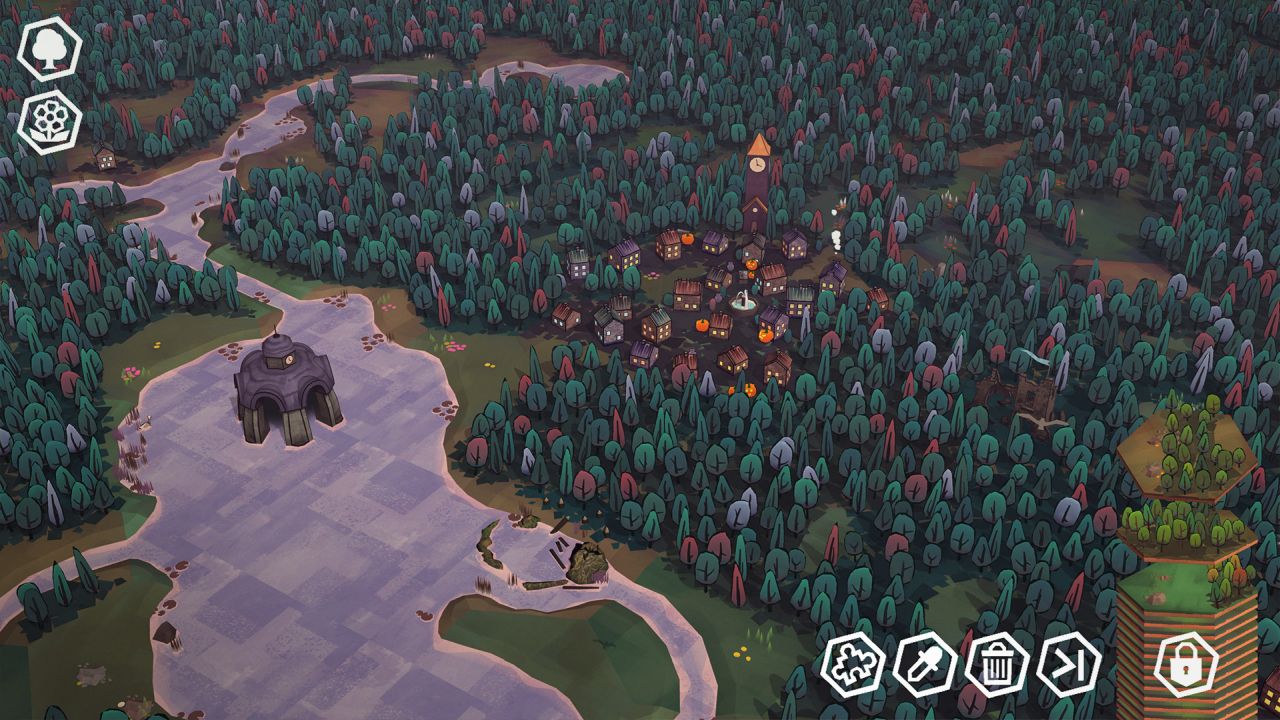Dorfromantik Review
Pleasant tile placing
With the explosion of mobile gaming over the past decade, some genres that work best on the platform with limited capabilities and screen space have seen a resurgence. Primarily, the puzzle and arcade games market has been oversaturated, and so many have started to make the jump to PC and Nintendo Switch, just to expand on their potential market audience. The PC ports range from good to barebones, though some titles do manage to succeed. It’s tough to stand out at a time like this, but Dorfromantik, a new landscape building light puzzle game from Toukana Interactive, manages to offer a fun and charming experience that stands out.

In essence, Dorfromantik is a light, relaxing, and replay-focused puzzle game. The view is isometric, and you can zoom in and out, as well as rotate the camera. Players start off on a blank slate with a single hexagonal terrain tile. From here, you then begin placing other terrain tiles connected to it, and continuously grow the area. The tiles you place can contain a random combination of objects and sides. For example, a tile may have a few houses, a wheat field, a river, or a rail road. These objects can touch multiple sides of the hexagon tile, a few sides, or just one side. This serves as a sort-of connection mechanic, where you want to rotate the tile and make it connect to others with the same object. So placing a tile with some homes next to an existing tile’s side with homes is the goal. The objects can span multiple sides of a single tile, such as a tile with a forest on half of the sides of the hexagon.
And so you continue to build out the terrain, trying to connect like-sides of each new tile you place. Doing so earns you bonus points, and the game has a few different mechanics to keep your builds feeling dynamic. For example, there are quest tiles, which require that you connect many of the same objects together, such as a large forest, or a big group of homes. Another quest type asks you to “close” a group of objects, by placing tiles such that the area becomes self-contained. There’s a satisfying balance of strategy, as you try to keep a streak of objects open in case a quest tile comes up, but at the same time you need an exact amount to complete a quest. So for example, a quest tile may ask for 30 connected houses, but if you have more than that in your current chain, a new group has to be started. Doing these quests is not only fun and requires some forward-thinking, but it’s also key to keeping your session going and going for a high score. Players get a limited number of tiles to place at the start, and by completing quests, you geta few more each time. Once you are out of tiles, the session is over and you have to start from scratch.

The mechanics of Dorfromantik are a little bit hard to explain on paper, but after playing the brief tutorial and a few rounds of the main mode, it will begin to click (pun intended). There is plenty of strategy involved, but the game is very approachable and fun to meddle with. You can’t delete or undo tile placements, which adds weight to every decision, and the game does an excellent job of letting you know with tooltips when placing a tile may lock you out of an ongoing quest. There are also limitations to make the terrain flow naturally, so you can’t have a railroad just end without a proper end-of-line tile. As all tiles are randomly generated, each session poses a unique challenge to tackle, as does your build strategy.
Sessions can take around 30 minutes or more, and there are no time limits so you can strategize – or just enjoy the scenery – for as long as needed. The main Classic mode contains a variety of goals to achieve, such as placing a certain amount of tiles or quests, which in turn unlocks new tile varieties that can appear in your future sessions, and new biomes. So there’s a bit of a nice roguelike progress curve, as you have a reason to keep trying again and improving your build strategies. Each session itself also saves your total score which can be compared to others on the leaderboards.

Aside from the Classic mode, there’s also Quick mode, which offers shorter sessions and less starting tiles to spend. In Monthly mode, players can complete to put up their best score on the leaderboard using a pre-determined random seed for the tiles that you get. For those wanting even more of a challenge, Hard Mode has less quests (and thus less opportunity to earn tiles to use before you run out), and the tiles that you do get have more unique and complex layouts/sides. On the other hand, if you want something relaxing, Creative Mode simply lets you enjoy the process of creating the terrain. There are no scores, the tile supply is endless, you can delete tiles, and customize the frequency of each type of tile. Further, there is even a Custom mode, which gives players even more freedom to simply enjoy the building process, customize quest difficulty, and so on.
Dorfromantik succeeds at being an accessible and enjoyable puzzle experience, and it’s supported by a presentation to match. The colorful and cozy art style suites the game well, with a few different color palettes to choose from that players unlock overtime. The landscape comes together dynamically as you place tiles and grow the land outwards, and zooming out presents a picturesque view that’s tranquil and charming. It also frequently comes alive with a few dynamic elements, such as boats cruising on the rivers and trains on the rail tracks. The soundtrack is equally appropriate, with a calming and instrumental soundscape. Really, the only fault to be found is that the UI, while great for the most part, lacks a proper main-menu option. So it can be a little confusing to jump between different modes and game-in-progress saves.

Light puzzle games are a dime a dozen, but Dorfromantik is one of the good ones. It’s a game that you’d expect to also find on mobile platforms, and yet its surprising PC-exclusive nature means there are no controls issues and the performance is excellent. The central hook of building out the landscape using connected tiles is excellently executed and offers plenty of replay value, with the added bonus of multiple modes to really dig into the mechanic. With a charming presentation to match, this $15 relaxing puzzler is both enjoyable and calming, and comes recommended to anyone looking for a light way to spend a multitude of hours.
 Comments
Comments










